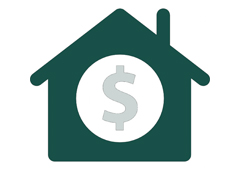The economic data is in from the beginning of the year, and it’s shaping out to be a good one. One of the main factors that affects growth in the housing market is job creation. In January 2016, although employment growth wasn’t what it was in 2015, more than 150,000 jobs were created. This number is on par with predictions from the National Association of Realtors, or NAR. Unemployment is declining, and job growth is expected to translate into 3 percent growth in housing sales this year.
Looking specifically at the housing market, existing home sales were up 11 percent from January 2015. Although that may not seem like a groundbreaking number, it surprised analysts, who thought existing home sales would decline.
At the same time, construction is steady, and new homes are more affordable than ever. This has resulted in a decline in the median price of new homes.
Although this year should see growth in the real estate market, housing supply is tight. It would take about four months for homes that are currently on the market to sell. That’s faster than the average, which is closer to seven months. The tight supply is driving up home prices and encouraging homebuyers to take action. People are moving more quickly to purchase homes, and the demand in 2015 was higher than usual for the winter season.
If anything is negatively affecting the market, however, it’s stock values. Consumer confidence is down, but so are mortgage rates. The average rate for a 30-year fixed-rate mortgage is 3.7 percent. Combined with the upturn in demand, these rates are helping to encourage growth in the real estate market in 2016.
